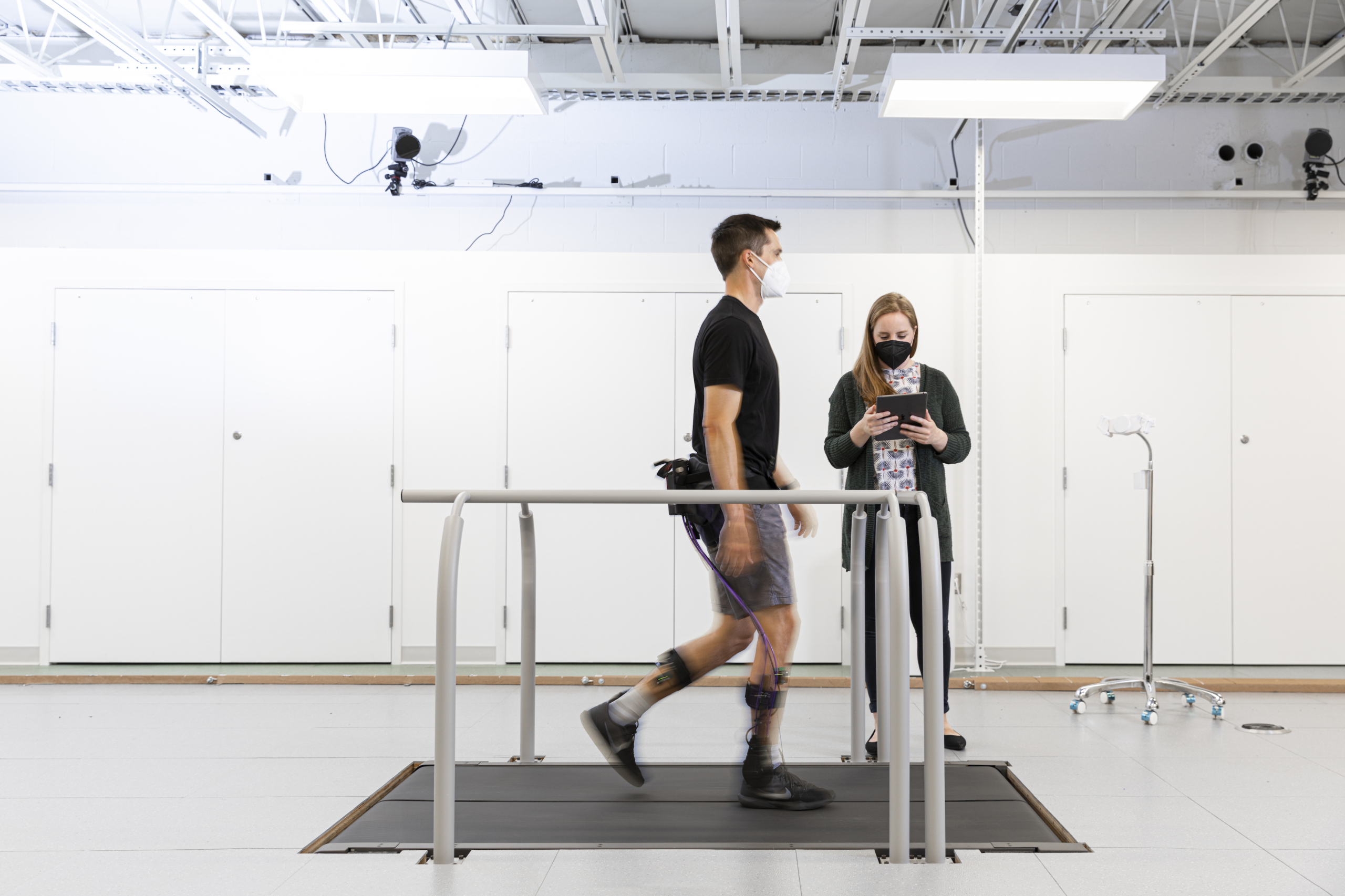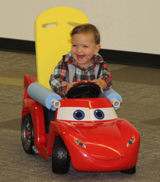September 15, 2025 Exploration and self-initiated mobility are known to support growth in learning, communication, social skills, and play. Yet, due to limited training, funding, or access to different types of devices, powered mobility devices are often underused in early intervention and pediatric therapy settings. Bethany Sloane’s research is focused on addressing these issues, to ensure that children under the age of three have opportunities to explore their environments and participate in daily life through mobility. She aims to create…
Category: Kat Steele news articles
Former CREATE postdoc Sasha Portnova talks about her experiences and inspirations
November 22, 2024 Dr. Alexandra (Sasha) Portnova, a postdoctoral researcher with CREATE in 2022-24, was interviewed about those experiences as a NIDILRR-funded fellow and about her work in rehabilitation research. In the National Rehabilitation Information Center interview, Portnova spoke about the value of the CREATE ARRT fellowship in transitioning from the overwhelming life as a Ph.D. student into a faculty career. Currently, Portnova is a research scientist in the Neuromechanics & Mobility Lab, directed by CREATE associate director Katherine M….
Off to the Park: A Geospatial Investigation of Adapted Ride-on Car Usage
November 7, 2023 Adapted ride-on cars (ROC) are an affordable, power mobility training tool for young children with disabilities. But weather and adequate drive space create barriers to families’ adoption of their ROC. CREATE Ph.D. student Mia E. Hoffman is the lead author on a paper that investigates the relationship between the built environment and ROC usage. With her co-advisors Kat Steele and Heather A. Feldner, Jon E. Froehlich (all three CREATE associate directors), and Kyle N. Winfree as co-authors,…
CREATE’s Newest Ph.D Graduates
June 9, 2023 We’re proud to see these talented, passionate students receive their Ph.D.s and excited to see how they continue their work in accessibility. Alyssa Spomer, Ph.D. Mechanical Engineering Current: Clinical Scientist at Gillette Children’s Hospital, leading research in the Gillette Rehabilitation Department to improve healthcare outcomes for children with complex movement conditions. Elijah Kuska, Ph.D. Mechanical Engineering Plans: Elija will start as an assistant professor at the Colorado School of Mines in the Mechanical Engineering Department in January…
A Ph.D. Student’s Promising Research in Mobility in Cerebral Palsy

November 8, 2022 Whether she’s researching how biofeedback systems can guide gait training in children with cerebral palsy or leading toy adaptation events, Alyssa Spomer is committed to advancing accessible technology. A Ph.D. student in UW Mechanical Engineering (ME) and advised by CREATE Associate Director Kat Steele, Spomer is the student chair of CREATE-sponsored HuskyADAPT. Her studies have been multidisciplinary, spanning ME and rehabilitation medicine. She uses her engineering skills to understand the efficacy of using robotic devices to target and improve…
CREATE + I-LABS: focus on access, mobility, and the brain

A new research and innovation partnership between CREATE and the UW Institute of Learning and Brain Sciences (I-LABS) focuses on access, mobility, and the brain, especially how early experiences with mobility technology impact brain development and learning outcomes.
Feldner and Steele’s ‘Reimagining Mobility’ series featured in The Daily
November 17, 2021 Collaboration and diverse perspectives and approaches are at the heart of CREATE’s mission to make technology accessible and make the world accessible though technology. One program developed by CREATE faculty looks at mobility solutions and ways to eliminate barriers. Hosted by CREATE associate directors Kat Steele and Heather Feldner, the Reimagining Mobility Conversation Hub brings in speakers from a variety of backgrounds and industries to inspire conversations about the future of mobility. The UW student newspaper, The…
$1M NIDILRR award for leadership training program
A team of CREATE faculty has received a five-year, $1M grant from the National Institute on Disability, Independent Living, and Rehabilitation Research (NIDILRR) for the project, “ARRT: Postdoctoral Training in Physical Computing and Fabrication to Support Innovations for Community Living and Participation.” Congratulations on the funding to the team members: Co-PI Jennifer Mankoff, Ph.D and Professor Paul G. Allen School of Computer Science and Engineering Co-PI Anat Caspi, Ph.D. and Principal, Paul G. Allen School of Computer Science & Engineering…
NIH Rehabilitation Research 2020
October 13, 2020 Dr. Kat M. Steele, an associate director of CREATE, presents at NIH’s Rehabilitation Research 2020: Envisioning a Functional Future conference on Friday, October 16, 2020. She will be presenting in the Mobility Across the Lifespan session with Bernadette Gillick, PhD, PT from the University of Minnesota and Levi Hargrove from the Shirley Ryan AbilityLab. This meeting highlights rehabilitation research and informs the congressionally-mandated NIH Research Plan on Rehabilitation Research to inform priorities for the next four years….
AccessComputing shares UW CREATE’s launch and work toward accessibility
CREATE faculty are already internationally recognized for their contributions to assistive technology and accessible computing; by bringing them together under one organizational roof, CREATE will enable synergies and foster collaborations that enable faculty and students to become more than the sum of their parts.
Kat Steele honored by students with FACET award

April 2020 Kat Steele, CREATE Associate Director and the Albert S. Kobayashi Endowed Professor of Mechanical Engineering, received a 2020 Faculty Appreciation for Career Education & Training (FACET) award from appreciative students. Presented by the Career Center @ Engineering, the award recognizes faculty members who have positively impacted their career and professional development.